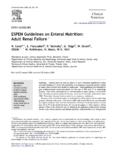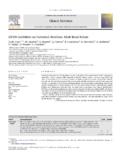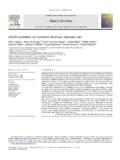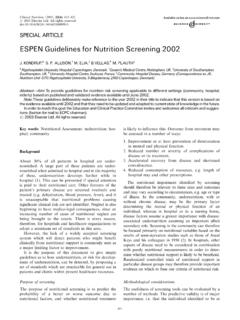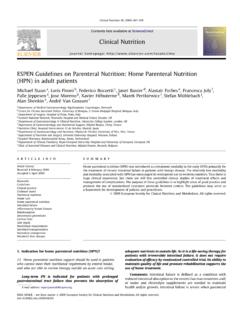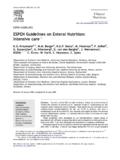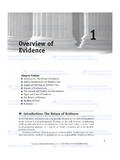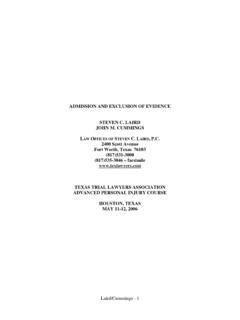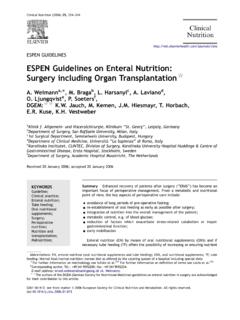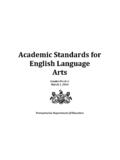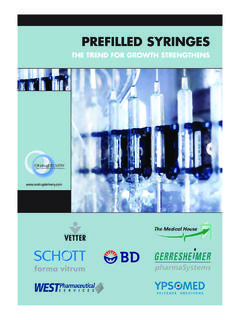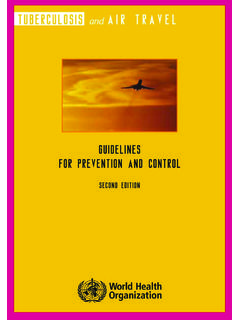Transcription of ESPEN Guidelines on Enteral Nutrition: Pancreas
1 Clinical nutrition ( 2006 )25, 275 284 ESPEN GUIDELINESESPEN Guidelines on Enteral nutrition : Pancreas $R. Meiera, , J. Ockengab, M. Pertkiewiczc, , N. Milinice, J. MacFief,DGEM:$$C. Lo ser, V. KeimaDepartment of Gastroenterology, Kantonsspital Liestal, Liestal, SwitzerlandbDepartment of Gastroenterology, CCM, Charite -Universita tsmedizin Berlin, Berlin, GermanycDepartment of nutrition and Surgery, Central Clinical Hospital, Warsaw, Polandd1st. Department of Gastroenterology, MAV Hospital, Budapest, HungaryeDepartment of Gastroenterology, University Hospital Bezanijska kosa, Belgrade, Serbia-MontenegrofDepartment of Surgery, Scarborough Hospital, Scarborough, UKReceived 21 January 2006 ; accepted 21 January 2006 KEYWORDSG uideline;Clinical practice; Enteral nutrition ;Oral nutritionalsupplements;Tube feeding;Pancreatitis;Undernutrition.
2 MalnutritionSummaryThe two major forms of inflammatory pancreatic diseases, acute andchronic pancreatitis, require different approaches in nutritional management, whichare presented in the present guideline. This clinical practice guideline givesevidence-based recommendations for the use of ONS and TF in these patients. It wasdeveloped by an interdisciplinary expert group in accordance with officiallyaccepted standards and is based on all relevant publications since 1985. Theguideline was discussed and accepted in a consensus mild acute pancreatitis Enteral nutrition (EN) has no positive impact on thecourse of disease and is only recommended in patients who cannot consume normalfood after 5 7 days.
3 In severe necrotising pancreatitis EN is indicated and should besupplemented by parenteral nutrition if needed. In the majority of patientscontinuous TF with peptide-based formulae is possible. The jejunal route isrecommended if gastric feeding is not chronic pancreatitis more than 80% of patients can be treated adequately withnormal food supplemented by pancreatic enzymes. 10 15% of all patients requirenutritional supplements, and in approximately 5% tube feeding is full version of this article is available European Society for Clinical nutrition and Metabolism. All rights IN $ - see front matter& 2006 European Society for Clinical nutrition and Metabolism.
4 All rights :EN, Enteral nutrition (both oral nutritional supplements and tube feeding); IU, international units; PEG,percutaneous endoscopic gastrostomy; MCT, medium chain triglycerides; ONS, oral nutritional supplements; TF, tube feeding$For further information on methodology see Schu tz et further information on definition of terms see Lochs et Corresponding author. Tel.: +41 61 9252187; fax: +41 61 (R. Meier).$$The authors of the DGEM (German Society for Nutritional Medicine) Guidelines on Enteral nutrition in pancreatitis areacknowledged for their contribution to this IN PRESSS ummary of statements.
5 Acute pancreatitisSubjectRecommendationsGrade7 7 NumberIndicationsMild acutepancreatitisEnteral nutrition is unnecessary, if the patient canconsume normal food after 5 7 nutrition within 5 7 days has no positiveimpact on the course of disease and is therefore tube feeding, if oral nutrition is not possible dueto consistent pain for more than 5 nutrition is indicated if nutrition should be supplemented byparenteral nutrition if severe acute pancreatitis with complications(fistulas, ascites, pseudocysts) tube feeding can beperformed feeding is possible in the majority of patients butmay need to be supplemented by the feeding (normal food and/or oral nutritionalsupplements) can be progressively attempted oncegastric outlet obstruction has resolved, provided itdoes not result in pain, and complications are undercontrol.
6 Tube feeding can be gradually withdrawn asintake continuous Enteral nutrition in all patients whotolerate the jejunal route if gastric feeding is case of surgery for pancreatitis an intraoperativejejunostomy for postoperative tube feeding gastric outlet obstruction the tube tip should beplaced distal to the obstruction. If this is impossible,parenteral nutrition should be of formulaPeptide-based formulae can be used formulae can be tried if they are tolerated. : Grade of recommendation; Number: refers to statement number within the of statements: Chronic pancreatitisSubjectRecommendationsGrade7 7 NumberGeneralAdequate nutritional therapy as well as paintreatment may have a positive impact on nutritionalstatus.
7 Caloric intake is increased after anattenuation of postprandial Meier et IN PRESSI ndicationsMore than 80% of patients can be treated adequatelywith normal food supplemented by 15% of all patients require oral feeding is indicated in approximately 5% ofpatients with chronic of : Grade of recommendation; Number: refers to statement number within the Acute pancreatitis (AP)Preliminary remarks:The management of acutepancreatitis (AP) differs according to its by the Atlanta criteria1approximately75% of the patients have mild disease with amortality rate below 1%.2 Mortality increases upto 20% if the disease progresses to its severenecrotizing form3 8and in the most severe casesmortality can rise to 30 40%.
8 7,8 Severe AP with itsrelated systemic inflammatory response (SIR)causes increased metabolic demands and mayprogress to multiorgan disease (MOD). Using ima-ging methods and laboratory parameters, progres-sion can be predicted. Until recently, EN, eitherorally or by tube, was believed to have a negativeimpact on the progression of the disease due tostimulation of exocrine pancreatic secretion andthe consequent worsening of the autodigestiveprocesses of the Pancreas . Even though nutritionaldeficits are frequent in severe pancreatitis, nutri-tion as a part of therapy was neglected for a longtime.
9 Even now, few nutritional studies in thiscondition have been What influence does acute pancreatitisexert on nutritional status and on energy andsubstrate metabolism?Mild pancreatitis has little impact on nutritionalstatus or metabolism. In severe necrotisingpancreatitis energy expenditure and proteincatabolism are increased (IIa).Comment:In mild acute pancreatitis the clinicalcourse is usually uncomplicated and patients canconsume normal food, low in fat (o30% of totalenergy intake [vegetable fat are preferred]), with-in three to seven days. The disease has little impacton nutritional status or on energy and substratemetabolism.
10 It is not clear whether this is also truein the presence of pre-existing undernutrition,although it is probably important to meet nutri-tional requirements in such cases by whatevermeans are most specific and non-specific metabolic altera-tions occur in AP9(Ib). Basal metabolic rateincreases due to inflammatory stress and pain,leading to enhanced total energy necrotising pancreatitis, 80% of all patientsare catabolic9(Ib), with high energy expenditureand enhanced protein catabolism10(IIa). Thenegative nitrogen balance can be as much as40 g/day11,12and can have a deleterious effect onboth nutritional status and disease progression.
